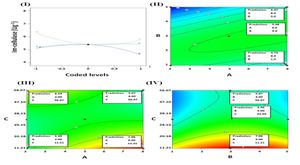India's projected GDP growth for the fiscal year 2025-26 is set to be between 6.3% and 6.8%, raising eyebrows among analysts who fear it signals an economic slowdown. Yet, the Chief Economic Advisor (CEA), V Anantha Nageswaran, has urged viewers to look beyond these numbers, framing them instead as a necessary adjustment to global economic conditions.
"India's growth slowdown should be placed in the content of global economic activity trending down," Nageswaran stated. He emphasized the importance of viewing the forecast through the lens of international trends rather than as symptomatic of domestic failure.
The projections mark a stark decrease from the 8.2% growth seen last fiscal year, the highest India has recorded since before the pandemic, and outpace previous years' growth figures. This shift follows the backdrop of tightening global economic conditions which have universally affected countries worldwide, including India.
According to the recent Economic Survey, the downshift correlates with the Federal Reserve Bank of Dallas's observed declines in global economic activity which began in 2023. Nageswaran pointed out, "The golden era of globalization is probably disappearing amid geopolitical and policy uncertainties." The impacts of this retreat are clear: uncertain global investment flows, fluctuated trade forecasts, and heightened geopolitical tensions are generating ripple effects across economies.
Despite this challenging backdrop, Nageswaran remains optimistic about India's economic prospects, asserting, "Achieving a long-term growth rate of 8% is still possible." He underscored the necessity for India to initiate domestic policy changes and structural reforms to offset the adverse effects of the sluggish global atmosphere.
This sentiment echoes through the Economic Survey's recommendations, which call for significant structural changes, including deregulation and adjustments to compliance frameworks. Nageswaran articulated the need to shift from the traditional regulatory stance of 'guilty until proven innocent' to one of 'innocent until proven guilty,' arguing for a more lenient and business-friendly compliance structure.
He mentioned, "Why not? We are focusing on actions we can take domestically without overly relying on global factors." The aim is to fortify domestic growth engines, allowing India to pivot strategically and stimulate long-term economic development.
Adding to this discussion, Charanjot Singh Nanda, Vice-president of the Institute of Chartered Accountants of India, alluded to the historic importance of accountants and their role within this broader economic framework. Speaking to members at the World Forum of Accountants, he likened their dedication to nurturing the nation's financial integrity to the sacrifices made during India's freedom struggle.
Nanda stated, "Let’s create history and breach new benchmarks for our country," emphasizing the responsibility CEs wield as active participants in nation-building during this period of economic flux.
The Economic Survey also brings attention to the need for reforms to invigorate investment rates, which currently fall below the ambit required to sustain faster growth. Experts agree on the importance of elevading investment rates to at least 35% of the GDP from the current 31%.
Another point of concern is the waning corporate investments and consumer demand which are stalling the manufacturing industry’s growth. The current financial year is expected to close with 6.4% growth rate, the weakest since the advent of the pandemic, highlighting the urgency for timely adaptations.
While the global economic forecast may seem bleak, Nageswaran has transformed these forecasts against the backdrop of India's progress narrative, reiterations, and calls to action. The arguments presented within the Economic Survey underline not simply accountability but the willingness to adapt regulations to prop up the country's financial framework.
Experts have emphasized the importance of maintaining high growth trajectories, citing the ambitious goal of transforming India to a developed nation by 2047. The vision, titled Viksit Bharat, necessitates substantial and sustained economic momentum going forward.
India faces many hurdles, but with commitment and strategic shifts, the nation intends to navigate external pressures skillfully and maintain progress at home. The aspirations for growth will undoubtedly rest on balancing both internal reforms and external market conditions, ensuring the country emerges resiliently from current economic uncertainties.
The conversation around India's projected growth for FY26 may provoke discussions about potential economic slowdowns. Still, as articulated by the Chief Economic Advisor, this is not merely about diminishing figures but about recalibrations against dynamic global contexts.
Through effective domestic strategies, India aims to preserve and even augment its economic vitality toward realizing its long-term goals, countering the challenges posed by changing global realities.



